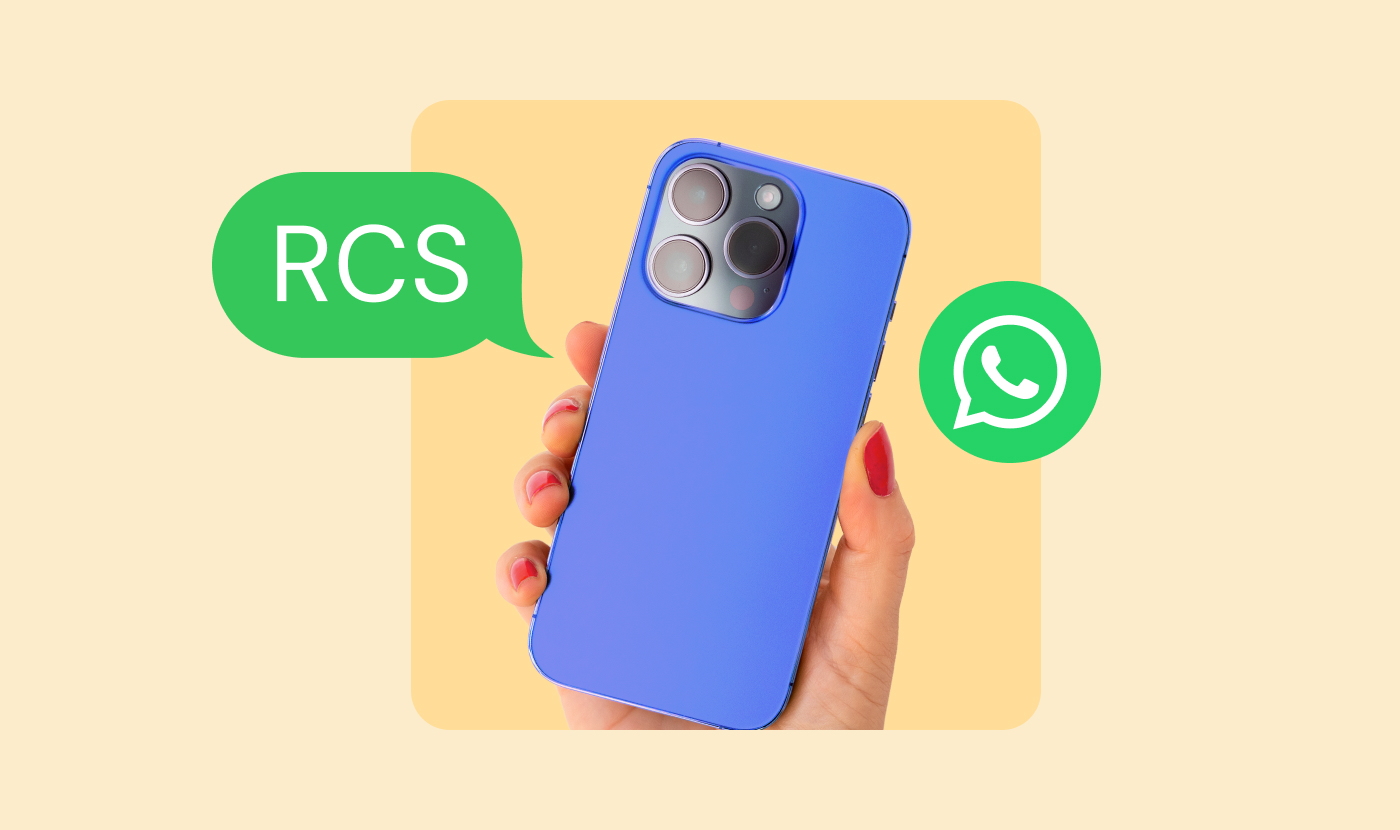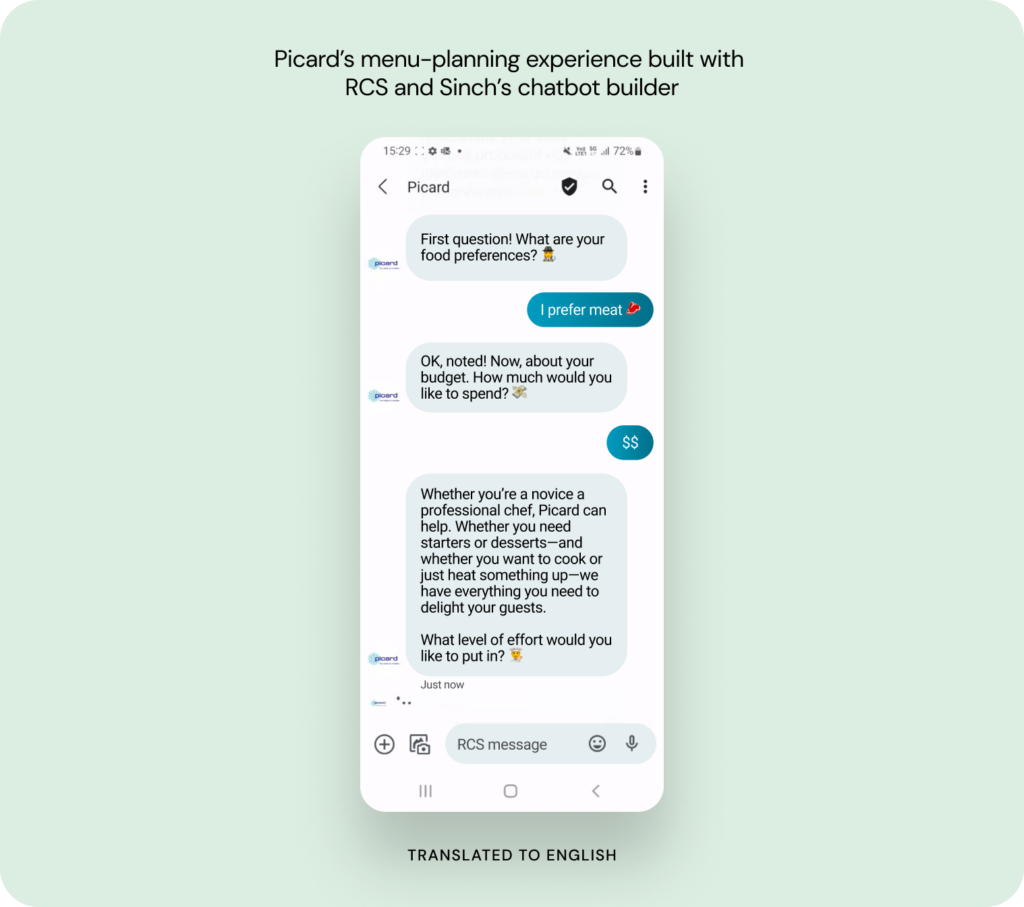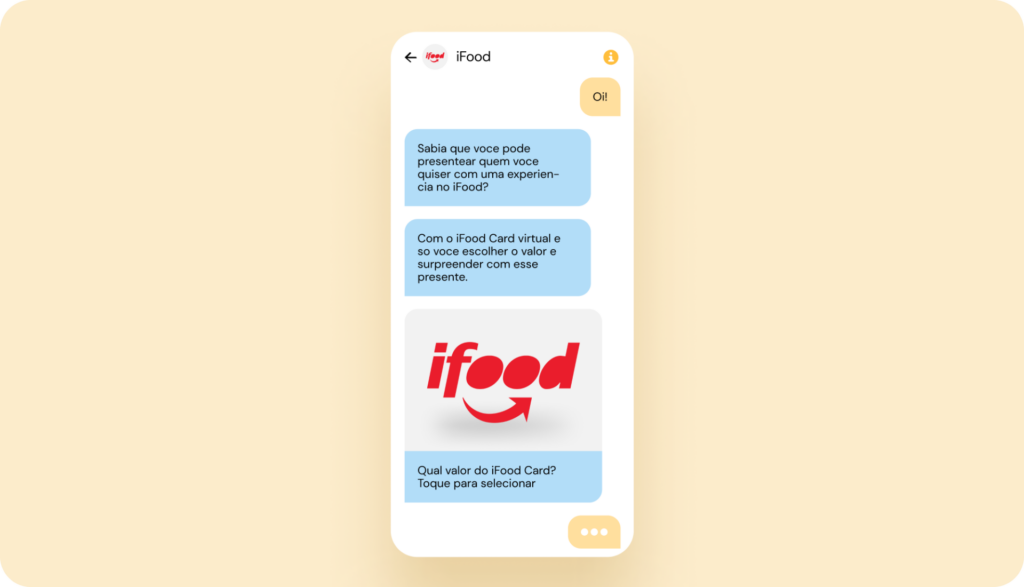Insights, Products
RCS vs WhatsApp: Which is best for business messaging?

Insights, Products

With over 23 billion texts sent globally every day, messaging is how the world connects, and it’s now just as important for businesses as it is for friends and family. Two channels leading the way? Rich Communication Services (RCS) and WhatsApp.
RCS messaging is becoming more popular after Apple started rolling out support in iOS 18 and more mobile operators have begun enabling RCS for Business. Meanwhile, WhatsApp continues to dominate as the world’s most popular messaging app, and a trusted channel for brands looking to drive engagement at scale.
In this article, we’ll compare WhatsApp vs RCS for business messaging, explore their business use cases, and help you when to use each (or both!) to create richer customer experiences.
WhatsApp and RCS offer different paths to the same goal: building stronger, more engaging customer relationships. Here’s how they compare, and where each can bring value to your business.
WhatsApp is owned by Meta and has more than three billion active users across 180 countries. It’s reliable, secure, and supports both business and personal messaging with three core solutions:

For users, WhatsApp is simple because it works on both Android and iOS and only requires downloading the app. Then, they can use it to have secure conversations with people and businesses.
Businesses can use WhatsApp to send updates, handle support, and run marketing campaigns all from a familiar interface. Brands that want to use a WhatsApp Business solution must first get opt-in from customers before messaging them.
“We see WhatsApp consistently drive engagement across regions, especially for high-frequency use cases like order confirmations and customer support.”

Rich Communication Services (RCS) is a messaging protocol from Google designed to deliver branded, interactive mobile experiences right inside a smartphone’s native text messaging inbox.
RCS was first introduced by the GSM Association (GSMA) to modernize SMS and MMS and offers features like multimedia sharing, read receipts, typing indicators, and more.
For business messaging, RCS for Business (previously called “RCS Business Messaging” or “RBM”) is the application-to-person (A2P) solution, and allows a business to send branded RCS messages from a verified sender profile directly to their subscribers. Like WhatsApp Business, RCS for Business requires brands to get customers’ consent before messaging them.

RCS chat is available right within an Android phone’s native messaging app like Google Messages. On Apple devices, iMessage and SMS remain the default messaging channels, but RCS support is gradually being introduced in some markets.
“With Apple rolling out support for RCS for Business, we know brands using it are experiencing much higher customer engagement, especially in markets where SMS is still dominant.”

When it comes to person-to-person (P2P) messaging, RCS and WhatsApp share a lot of features like read receipts, group chats, “user is typing” notifications, elevated security over SMS, and more.
When it comes to customer communications and business (A2P) messaging, both RCS and WhatsApp make it easy to connect with audiences in meaningful, engaging ways.
Here are a few business features that they share:
Of course, there are also a few features that make these two channels different. This table compares the differences between RCS and WhatsApp for business messaging.
| Feature | RCS for Business | WhatsApp for Business (API) |
| Usability | Messages arrive right in the native mobile messaging inbox (Android or iOS 18 and above) in supported markets. | App-based service (requires users to have the WhatsApp app). |
| Availability | Android and iPhone devices in select markets. | All smartphones with the WhatsApp app downloaded. |
| User base | One and a half billion monthly active users. | Over three billion monthly users. |
| Unique business features | Branded, verified sender profiles delivered to a user’s native messaging inbox, plus limited P2A options like chat triggers from search results (Android only, select markets). | WhatsApp offers WhatsApp Flows, click-to-chat ads, business templates, and more. |
| Security | Messages on Android are encrypted in transit. | Messages are end-to-end encrypted. |
| Cost | Pay-as-you-go and priced per message or session-based. Basic RCS messages are typically comparable to sending SMS. | Starting July 1, 2025, WhatsApp will charge for delivered marketing and authentication templates. Service messages stay free, and utility messages remain free within an open service window. |
Both RCS and WhatsApp have their strengths, and if you have to choose one over the other, your decision should come down to who your customers are, where they are, and what kind of experience you want to deliver.
So how would one go about choosing when to use RCS vs WhatsApp? Let’s explore some common business use cases of each messaging channel to help you decide if there’s one that’s better suited to meet your customer needs.
One-time passwords (OTPs) are important for helping keep your customers’ online accounts secure. While OTPs are commonly sent via text messaging, both WhatsApp and RCS also offer solutions.
As an example, EasyPark Group, a leader in the digital parking space, sends RCS reminders when supported, defaulting to SMS otherwise.
Watch the video to learn from Alex Keynes, Head of Product – Driver’s Experience at EasyPark about how they use RCS messaging to authenticate users and send parking reminders at scale.
This approach has had great results. In Germany, for example, delivery rates were over 97%.
Our recommendation? Both WhatsApp and RCS are excellent options to send OTPs, and both have a leg up over SMS verification. And when you send OTP messages via WhatsApp or RCS via Conversation API, you can choose either channel to fall back to traditional SMS to ensure your messages are always delivered.
No matter how you look at it, today’s customers expect personalized treatment. With open rates over 90%, both RCS and WhatsApp are ideal for sending targeted promotions that drive results.
Brands can use both channels to offer:
And because messages come from business sender profiles, customers know they’re hearing from trusted sources.
Take Picard, for example. They used RCS to build a holiday menu planner that let customers share preferences like dietary needs and budget, all within their phone’s native messaging app.

WhatsApp offers similar opportunities. Consórcio Magalu used WhatsApp to redesign its appointment scheduling customer experience, resulting in increased conversions and higher satisfaction.
And with the introduction of Meta’s Marketing Messages with Optimizations (MM Lite API) now in beta, sending outbound WhatsApp marketing messages is becoming even better. The new API is designed to improve delivery, provide deeper analytics, and help brands drive higher open and conversion rates.
Note for U.S. marketers: As of March 2025, businesses can’t send templated marketing messages to WhatsApp users with U.S. phone numbers unless a customer reaches out first. That means you’ll need to encourage U.S. users to start the conversation. Read about special WhatsApp marketing rules for the U.S.
The bottom line? Personalized messaging isn’t about choosing RCS or WhatsApp over the other. It’s about aligning your business goals with who your audience is and where they’re located. Then, you can choose one or both channels to strategically achieve those goals.
RCS are both powerful on their own, and together. You can use one channel to boost engagement on another: For example, you could use an RCS campaign to drive email newsletter signups, or you could use WhatsApp marketing to grow your social media presence. Each touchpoint helps amplify your reach.
A great example comes from BUT, a leading home furnishing retailer in France. First, they modernized their physical catalog strategy using WhatsApp catalogs, which allowed customers to build their shopping carts directly in WhatsApp.
Then, they turned to RCS to elevate their promotions. One RCS campaign reached a remarkable 13.3% click rate and generated €61,000 in additional turnover, tripling results from the previous year.
click-through rate of RCS messages
additional revenue earned from RCS
When RCS and WhatsApp are part of a connected, omnichannel marketing strategy, they drive real results together.
Did you know that 38% of consumers prefer working with customer service via mobile messaging channels? And both RCS and WhatsApp are great options for offering support.
iFood in Brazil is a good example. They used a WhatsApp chatbot to scale up their customer service, allowing for faster gift card conversions and NPS measurements through surveys.

The results? The AI solution manages 45% of incoming inquiries, cutting delivery costs by 70% and achieving a 91% satisfaction score from onboarded delivery staff!
RCS offers similar capabilities and can be used alongside a chatbot to provide customer support. See how Macif used RCS to re-engage their five million insurance policyholders as an example.
Customers want support on the channels they already use. Whether it’s WhatsApp in Brazil or RCS in France, you should be using the messaging channel or channels that your customers are most comfortable with. This will help make sure they’re engaged and satisfied with your service, making them more loyal customers in turn.
Let’s go through a few frequently asked questions about RCS and WhatsApp.
RCS and WhatsApp share a lot of similarities, and with Apple now supporting RCS, it might be tempting to go down the path that RCS could someday replace WhatsApp. But we wouldn’t go that far.
In this short video, Sinch’s Miriam Liszewski breaks down why RCS and WhatsApp aren’t in direct competition. Each serves different business needs and fallback options let brands use both.
Our advice is that instead of thinking of one channel replacing another, think instead about how you can use each channel to provide different experiences for your customers. In some markets, one might be more effective than the other.
The answer to this depends on your business needs, target market, and messaging goals. WhatsApp is a single app developed by Meta, so it offers a more controlled but reliable environment with an established user base and end-to-end encryption.
Meanwhile, RCS chats are supported by many carriers and Google, which means that it promises a uniform, widely available messaging experience and is enabled by default on all new Android devices.
No. RCS works within a user’s native mobile messaging app, while WhatsApp is a separate, standalone app. Although some devices support both, messages don’t cross between WhatsApp and RCS channels.
This is different from transcoding, a feature of Sinch Conversation API that automatically converts messages in real time. For example, if you have WhatsApp configured as a fallback channel for RCS, Conversation API will handle conversion between messaging formats behind the scenes.
Whether you’re using WhatsApp to send secure OTPs or RCS for personalized campaigns, each messaging channel has strengths to help you enhance overall user experience. And rather than choose one channel over the other, you can use them both strategically based on your goals and what your customers prefer.
Conversational messaging is how modern brands connect, support, and convert. And with channels like RCS and WhatsApp, you have the tools to do it natively, seamlessly, and at scale.
Want to go deeper into each messaging channel? Explore these resources to sharpen your strategy.
Questions? Ideas? Ready to get started? Reach out to our team. We’re here to help you create messaging experiences your customers will trust and remember.